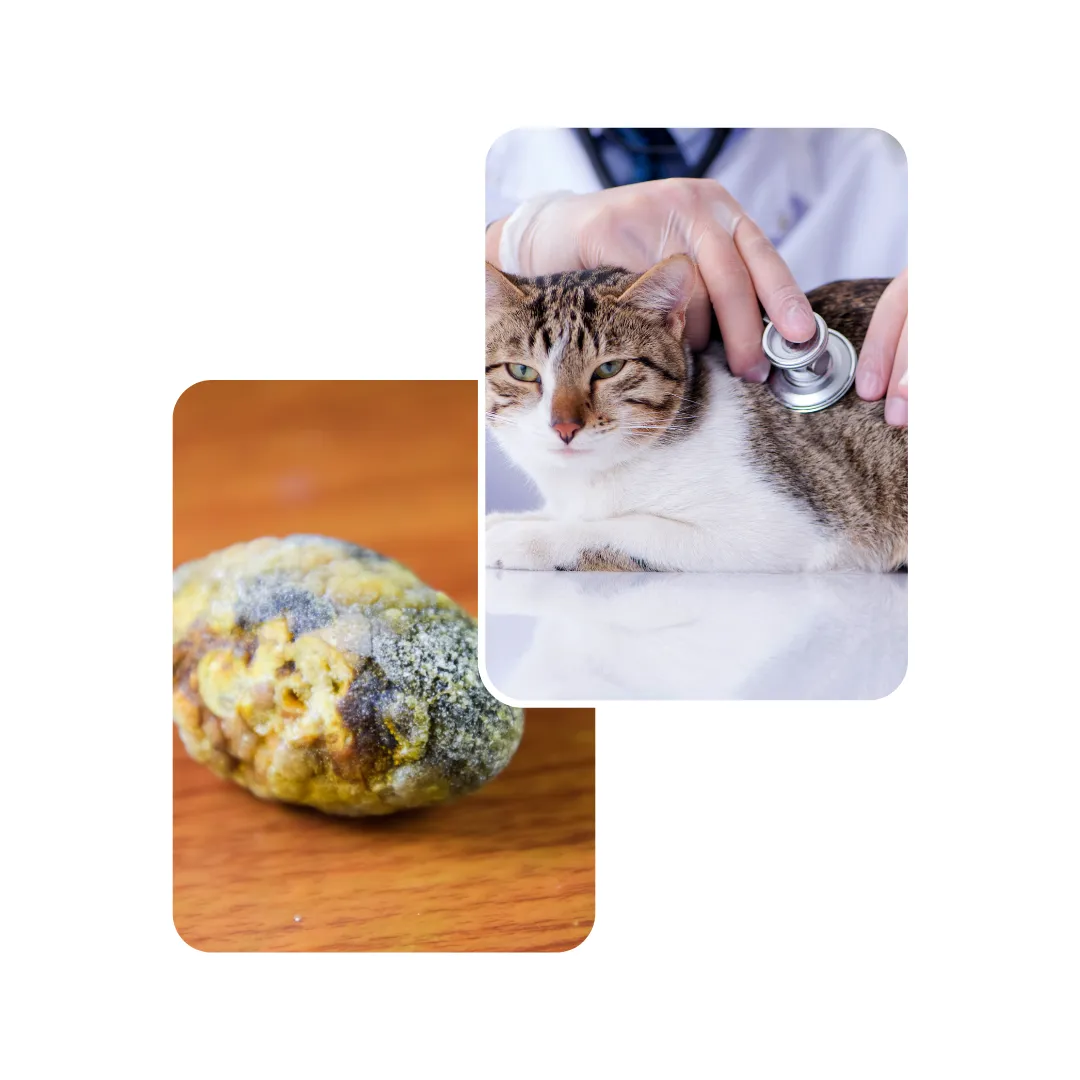
Bladder stones form when minerals in the urine build up and solidify. This can happen if a cat’s urine is too concentrated, too alkaline or contains an excess of certain minerals like calcium, magnesium or ammonium. Causes include poor hydration, urinary tract infections, genetic predisposition or an imbalanced diet. Male cats are at higher risk of dangerous blockages because of their narrow urethra.

Bladder stones cause discomfort in mild cases, but in severe situations, they can become life-threatening. Here’s what to look out for:
Your cat may squat for a long time in the litter box but only produce a few drops of urine—or none at all. This straining is a classic warning sign of stones blocking urine flow.
You may notice pink, red or brown-tinged urine in the litter box. This happens because stones scrape and irritate the bladder lining.
Because using the litter box becomes painful, cats sometimes pee on floors, carpets or beds. This is not a behavior problem, it’s a cry for help.
In advanced cases, toxins build up in the body due to poor kidney function, which can cause vomiting.
Instead of urinating a normal amount once or twice a day, cats with bladder stones often make many trips to the litter box, passing only small amounts of urine.
Cats may meow, cry or hiss when trying to pee. Some lick their genital area excessively as a response to pain or irritation.
When bladder stones are present, bacterial infections often develop. This makes the urine smell unusually foul or strong.
This is most common in male cats because their urethra is narrower. A blocked cat cannot pass urine at all.
Signs include repeated straining without results, constant crying, restlessness, vomiting, collapse or refusal to move. This is a medical emergency, without immediate treatment, it can be fatal within 24–48 hours.
Bladder stones are hard mineral clumps that form inside the bladder, causing pain, frequent urination, and sometimes dangerous blockages.
Common signs include straining to pee, blood in urine, frequent trips to the litter box or crying when urinating. Male cats with complete blockage need emergency treatment.
No, bladder stones do not disappear without treatment. Some struvite stones may dissolve with a special diet, but most need veterinary care.
Bladder stone cat treatment depends on the type of stone. Options include prescription diets, surgery, or procedures to flush stones out of the bladder. If the problem still occur, visit your professional vet.
Feeding a proper diet, encouraging water drinking and regular vet check-ups reduce the chance of recurrence.
Click the Appointment button or call us directly. Early treatment saves your cat from severe pain and prevents complications.
Your pet deserves expert care – Subscribe now for trusted tips and updates from our pet experts.
